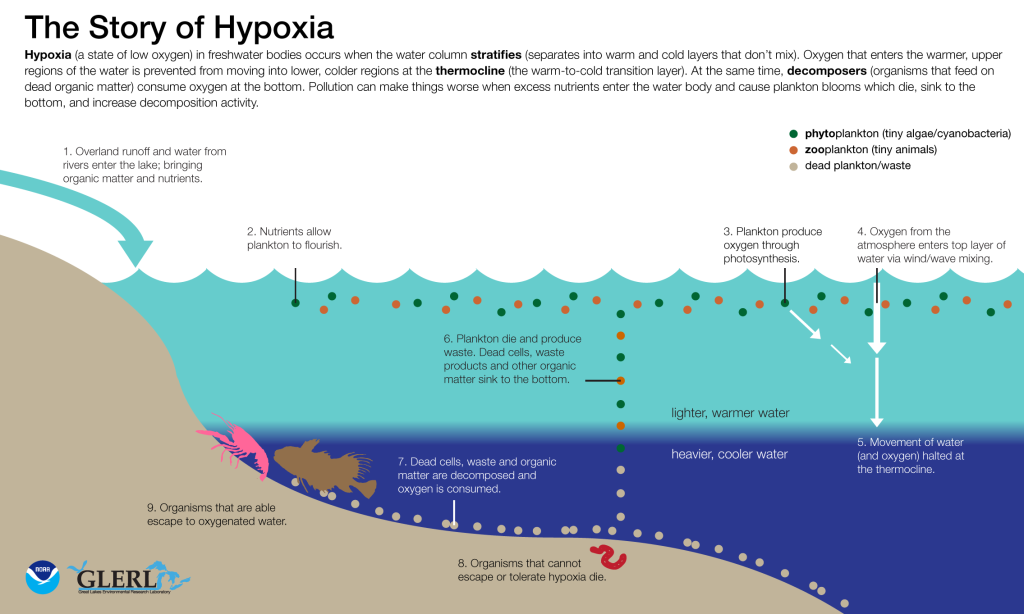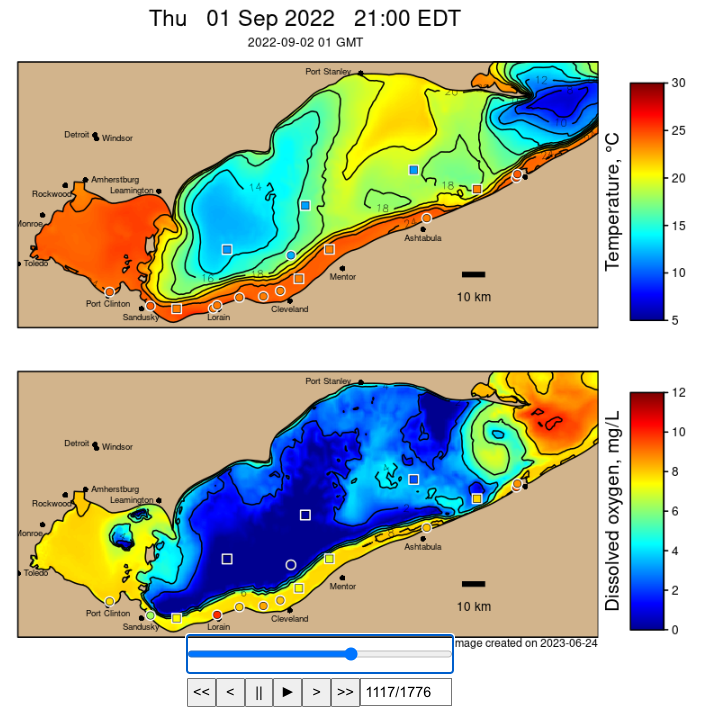As the 2023 hypoxia season in Lake Erie is beginning, it’s interesting to look back at the 2022 hypoxia season as depicted in this retrospective animation. The animation shows model-predicted bottom temperature and dissolved oxygen from the Experimental Lake Erie Hypoxia Forecast (background color scale) with observations plotted over top (symbols) using the same color scale. When the symbol colors match the background color, the model agrees with the observations.
Hypoxia (a state of low oxygen, < 2 mg/L) can occur in lakes when the water column separates into warm and cool layers that don’t mix, as oxygen is prevented from reaching the bottom water. As in past years, hypoxia began to appear in nearshore areas in early July 2022, and filled in offshore areas of the central basin in August. The maximum extent occurred in early September, then the hypoxic zone retreated offshore as cooler temperatures and stronger winds gradually deepened the surface mixed layer. Finally, the deepest parts of the central basin became vertically well-mixed in early October, bringing an end to the hypoxia season. Sustained easterly winds at > 15 kt can cause upwelling events along the Ohio shoreline, bringing hypoxic bottom water into nearshore drinking water intakes, and potentially causing fish kills. We heard of relatively few impactful events in 2022, although widespread hypoxia did occur, which may have been a fortunate coincidence of upwelling events not occurring during peak hypoxic conditions.

Realtime observations were obtained from Cleveland Water Alliance, LimnoTech, Freeboard Technology, the Great Lakes Observing System, and Ontario Ministry of the Environment, Conservation and Parks, in collaboration with regional operators of water treatment plants including the Cleveland Water Department, and Lake County Department of Utilities. In addition, NOAA GLERL deployed a network of sensor moorings (square symbols).
This example still frame from the animation shows conditions near the maximum extent of hypoxia in 2022:

About the Project
Researchers at NOAA GLERL and CIGLR developed an Experimental Lake Erie Hypoxia Forecast model, in a five-year project (2017-2021) funded by the NOAA NCCOS Coastal Hypoxia Research Program. The model has been producing 5 day dissolved oxygen and temperature forecasts each summer since the 2017 season. A plan is in place to transition the Lake Erie Hypoxia Forecast to operations at NOAA NCCOS in 2024.
If you have questions or observations, please contact Mark Rowe (mark.rowe@noaa.gov), Craig Stow (Craig.stow@noaa.gov), Peter Alsip (peterals@umich.edu), or GLERL (info-services.glerl@noaa.gov).
